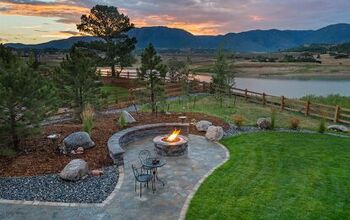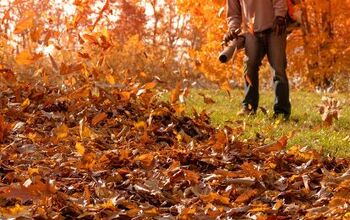How To Stop Water Runoff From A Neighbor's Yard

Are you worried about property harm because of the water drainage? You shouldn’t be. We have everything you may need to know about this issue! While runoff from a neighbors yard can be detrimental to yours, there are ways to stop it. But how exactly do you do that?
There are several options to stop water runoff from your neighbor’s yard, including installing a berm, dry well, or French catch basin. When building a berm, begin by installing a small one with a crescent-shaped consistency for optimal results. Contact a professional to get help for large-scale water runoff and spillage.
Water overspill from neighbors’ property is one of the most significant issues that need to be addressed. In most cases, when this issue starts, people usually don’t know how to stop water runoff from the neighbor’s yard. Steps are generally simple and need to be appropriately followed. Let’s discuss all the information together!
Do You Need Minor Grading or Resloping Services?
Get free, zero-commitment quotes from pro contractors near you.

Stop Water Runoff Coming From Your Neighbors Yard
Everyone loves their property, mostly if they have done a lot of hard work on remodeling or designing it. So, when your property starts to get harmed, it will automatically cause pressure on you.
Sometimes, our homes suffer some unexpected harm due to our neighbors’ negligence, and it is very frustrating if they are not paying attention to their ignorance.
Now, when it comes down to “what to do when your property is getting flooded and harmed,” you can employ some useful tips, tricks, and suggestions. Here are some suggestions to help you.
1. Build A Berm
When it comes to stopping water runoff from a neighbor’s yard, building a berm is an excellent option. The berm is a high barrier that is usually covered with grass and plants used to keep water away from the property. It also helps to slow down the overall flow of water.
The only thing you need to consider is where the distorted water goes and where you should plant it. Obviously, building your berm far away from the water runoff is not going to help or solve your problem. It’s a good idea to view where the water is pooling, and from there, you can plan where you want to build it.
Rules To Consider While Building A Berm
If you consider building a berm to block water drainage from a neighbor’s yard and you are a beginner, then the following guidelines will help you.
- Always be aware of where the water is going. Keep in check the direction of the flow of deflected water and always be mindful of where exactly it’s running off to. If the deflected water goes into your property, it will end up causing more harm.
- Build a small berm to start. Try starting with a smaller size bed because it will help with your startup rate.
- The structure also matters. Try to make a crescent-shaped consistency instead of a rounded one.
- Try to make your land sloppy but slow. This will help your berm look more natural and will prevent erosion.
- Use the top surface as the top layer and clay soil as a second pillar. It will help in preventing swelling during heavy rainfall.
Some Quick Suggestions About Berm Design
- The plants should be at the top of the berm. Try to plant plants that can survive dry conditions at the top of berm because this area dries up quickly.
- Water dependant plants should be at the bottom. Plants that need moisture can be planted at the bottom.
- Add some mulch. Putting mulch can help prevent erosion and will slow down the water overspill.
- Aim to hold more soil. Try to use an edging material so that it can hold more soil.
2. Install A Dry Well
The dry well is an underground structure that collects the overspill water. If you are on the mission of blocking water drainage from your neighbor’s yard, then installing a dry well will be a viable option for you.
Although this involves hard work because it needs to connect a pipe from the downspout to the tank, all the effort will surely bring fruit!
A dry well drains out the collected water from the surrounding soil and also collects water from the downspout. Try to use a well that is easy to install and also one that is long-lasting.
The Most Important Thing To Take Into Account When You Have A Dry Well
The only thing you need to check is the wash-off of debris and sediment because it will clog the walls of the well and lessen the tank’s ability to drain the water.
If any debris or sediment clogs the walls, eventually, your dry well won’t do the job that you built it for. You will then need to either fix it or make a new one. However, adding a filter screen at the top can help to prevent any debris or rocks from getting in there.
3. Create A French Catch Basin
Another excellent option for your mission of stopping water runoff from neighbor’s yard is to create a French catch basin or a French drain.
A French basin is filled with gravel and consists of a perforated pipe that will take the water from a higher level towards a lower level. In this way, you will save your property from flooding problems.
Following are some tips to consider while installing the French catch basin:
- Plan the breaking up. Firstly, you need to plan the “Breaking Up” and replace the dug area with gravel. Breaking up can be done by hand, and you can also ask a friend for help.
- Consider your dirt relocation. Secondly, you have to consider where to put your dirt excavated due to breaking up. You can use it to make slopes or prevent other areas from water overspill.
- Seek professional help or advice. If you can’t do it by hand digging, you can hire a professional.
Steps To Install A French Drain
- Plan your digging. Call your local utility company for underground marking help. They can help to pinpoint any pipes or gas lines so that you don’t accidentally ruin the underground structures while you dig.
- Start digging the drain. Using the information that your local utility company has provided, dig the drain for your project.
- Line your trough. Line the canal with landscape fabric and secure excess with fabric pins.
- Insert your gravel. Fill the trough with gravel to almost 2-3 inches. Ensure that your gravel is level, but you don’t want it super compact as the water will need to be able to seep between the pebbles.
- Place the pipe in gravel facing downward.
- Fill your trough. Now fill the whole trough with gravel leaving the above 2-3 inches’ area.
- Fix the excess landscape fabric. Now cover the upper area with extra landscape fabric that you secured earlier with fabric pins.
- Seed the upper area. Cover the upper area with dirt now and reseed it with grass.
Something To Remember
A French drain is really easy to install, and all you need is professional help. However, you need to remember to seek your utility company’s assistance for underground digging marking so you won’t break your underground pipes.
This is a critical step.
If you fail to do this, and you accidentally break a pipe, that is a mistake that will cost you thousands of dollars. It’s better to be safe than sorry.
4. Some Additional Steps To Prevent Water Overspill
Installing a dry well and a French catch basin are common methods that you can follow. There are some other steps that you can take to prevent water overspill:
- Plant a variety of vegetation. You can plant different vegetation and other plants that soak more water in the area where the overspill water from your neighbors harms your property.
- Level your yard. If your yard is lower than your neighbor, try to level it up so it will be safe from flooding.
- Install concrete slabs. Concrete patio slabs with bricks and pavers can be installed in the affected area so that it will soak excess water.
- Create a rain garden. A rain garden is also a good option as it acts as a catch basin and collects the overspill water.
- Add more mulch. Mulching can also be a good option; it will slow down the water overspill.
Who Is Responsible For Overspill?
Before taking the necessary steps, it is crucial to know who should take responsibility for property harm. Well, it depends on different conditions, but usually, the landowner is responsible for their property.
For example, if your yard is lower than your neighbor’s, then it is your responsibility to prepare for any possible harm.
If the flooding is caused by rain or other natural land conditions, then your neighbor is not responsible. However, if there is some property alteration happening on your neighbor’s property that is causing harm to your property, then your neighbor is responsible.
Sometimes, water sprinklers from neighbors cause flooding in the yard, but remember, you can solve this problem by talking with your neighbor and settling on a mutually accepted agreement in a case such as this.
Do You Need Minor Grading or Resloping Services?
Get free, zero-commitment quotes from pro contractors near you.

Wrapping It Up
There are several methods to stop your property harm from water overspill, as there is a lot of information about how to prevent water runoff from the neighbor’s yard. However, some people face continuous harm due to their neighbors’ carelessness or a lack of healthy dialogue between the two parties. So, they want to turn towards legal help.
It’s important to remember that you can take help from your country’s law to compensate for your property harm, but you need to invest your time in the tips and methods mentioned above before seeking legal help. Try one of these methods above, and speak with your neighbor before anything else! We wish you the best.

We are a team of passionate homeowners, home improvement pros, and DIY enthusiasts who enjoy sharing home improvement, housekeeping, decorating, and more with other homeowners! Whether you're looking for a step-by-step guide on fixing an appliance or the cost of installing a fence, we've here to help.
More by Upgraded Home Team






























